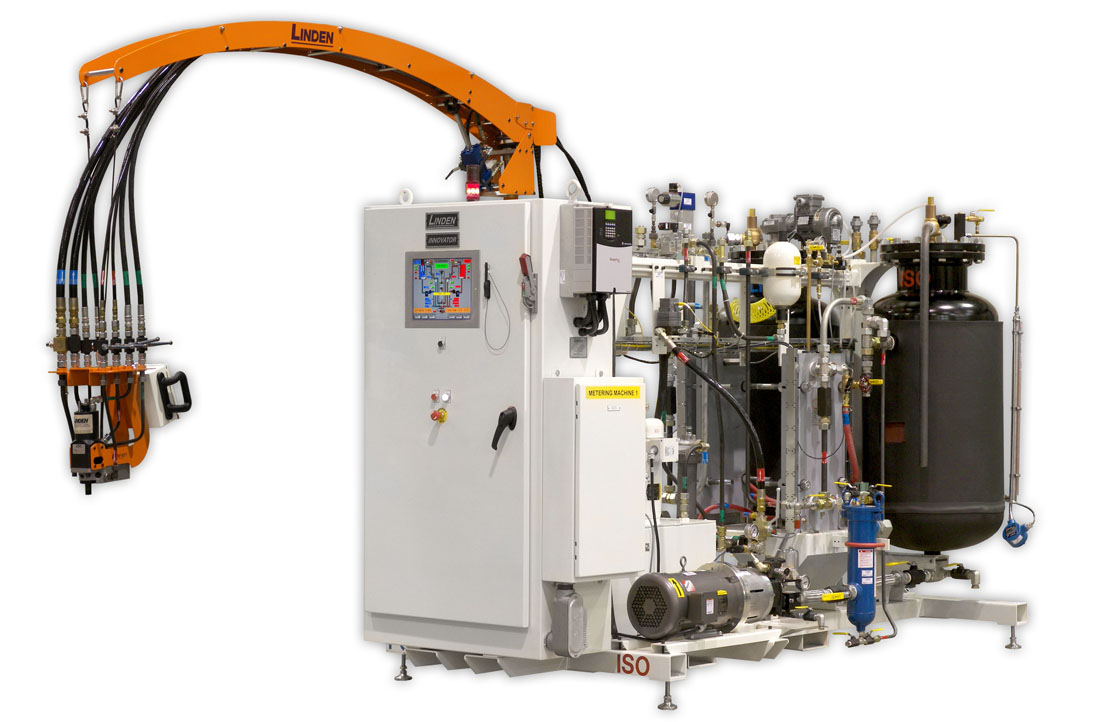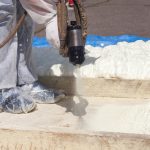What Are Chemical Metering Systems?
Whether your organization is in the aerospace, automotive, medical, or sporting goods industry, everything that occurs in your production environment is controlled and regulated in some way. When it comes to polyurethane processing, much of that control is set and monitored by a chemical metering system. These devices control how much material is distributed from a polyurethane storage system (such as a bulk chemical storage tank) to the mix head, where the material is then sprayed, poured, or otherwise distributed onto a specific surface. Chemical metering systems also control key aspects of polyurethane mixing ratios.
The type of chemical metering system you use depends largely on the application. There are two types of chemical metering systems available depending on your industry, what you’re producing, and the type of production environment you’re using. These include high pressure and low pressure. Let’s explore the differences between the two.
High-Pressure Chemical Metering Systems
High-pressure metering systems are ideal in production environments in which a significant amount of polyurethane material is needed, where mixing ratios are complex, or where a greater number of mix heads may be involved in mixing material. For example, if your organization produces sporting goods or other consumer goods, there are likely a variety of material specifications you need to achieve in order to make the product perform as expected. This might be for achieving a certain color, temperature resistance, moisture resistance, etc.
Using a high-pressure chemical metering system, your organization can connect up to 16 mix heads to a single system, allowing you to achieve extremely precise ratios in each mix head or to mix a larger amount of material through one system. Depending on the application, high-pressure chemical metering systems can achieve outputs of as little as 2 lb. per minute (0.9 kg/min) up to 1,500 lb. per minute (680 kg/min) — providing your production environment with a great deal of flexibility to meet your most stringent of production demands.
Low-Pressure Chemical Metering Systems
Low-pressure metering systems support production environments with lower or midsize volumes of material, higher viscosities, and differing levels of viscosity between the different chemicals. Low-pressure systems also help treat different streams of chemicals prior to their mixture and distribution through the mix head, enabling companies to achieve extremely specific material specifications to meet their production goals.
With a low-pressure metering system, companies can connect one or more components to a single low-pressure chemical metering system, allowing them to be efficiently metered out, mixed, dosed, and even casted at specific throughput rates. Examples of the use of low-pressure chemical metering systems include the coating of certain parts in the aerospace industry to protect them from extreme temperature variations and the application of polyurethane to different structural elements in the construction industry to prevent rust.
What to Look for in the Ideal Chemical Metering System
1. Cycle Times
One of the key goals of chemical metering systems is to make production more efficient and ultimately accurate by bringing multiple components of a polyurethane mixture together, balancing their respective mixing ratios, and managing their material flow to the end application. To achieve this, chemical metering systems must be able to provide specific cycle options via a range of throughput and output possibilities.
For example, a company producing household goods will likely be operating on tight profit margins. One of the best opportunities for such a company to grow that profit margin and become more profitable is through efficiency and precision in the production process. Because chemical metering systems are one of the earliest steps in production, it is absolutely critical that this piece of equipment possesses the throughput and output capabilities that your organization needs. Utilizing multiple machines or other processes to achieve your outputs is not an efficient solution, nor is it capable of upholding the throughput and output needed to maintain and improve margins as well as service levels.
2. Integration
Production environments no longer consist of independent assets operating on their own. Now, various equipment such as conveyors, part feeders, storage tanks, chemical metering systems, and more are integrated with advanced management systems as well as robotics. These help to automate processes, ensure consistent and reliable results, eliminate unnecessary costs, and ultimately make the production process significantly more efficient.
Many chemical metering systems can be integrated with these systems throughout a production facility. For example, bulk chemical storage tanks (often the first step in a production process) can feed material to the metering system. From there, material enters the mix head and is distributed onto the application surface. Robotics setups can then manage the movement of goods to the next step of the production process, whether that’s onto a conveyor for transport to another phase or to a parts feeder for another step in product customization.
3. Customization
With the sheer number of products available in global markets today, it’s more important than ever that your organization remains as competitive as possible to differentiate your offerings. To achieve this, you need a production process that supports the unique features of your products and makes their manufacture efficient, accurate, and reliable. By customizing your manufacturing assets according to what you want to offer, you can achieve the competitive advantages you’re looking for and maintain their consistency long-term.
The chemical metering system you choose should support this vision. After all, this system is what delegates material in different configurations and steps to achieve key product features. These include color, material specifications like heat resistance, and other protective features like coatings and sealants. Along with other production equipment, investing in a truly customized solution that can achieve the mixing ratios, output needs, and overall precision of each mixture is paramount to success.
4. Maintenance
Best-in-class production equipment should come with best-in-class support. While chemical metering systems are designed for long-term, consistent use, with time you may begin to notice the equipment needing updates or repairs in order to maintain efficiency and performance. To that end, the manufacturer of that equipment should be a key consideration in your decision to buy. What does their service program look like? What are their repair capabilities? Do they offer field service? What technology is available to diagnose any problems? And most importantly, what is their turnaround time for any requested repairs or upgrades?
If You Want the Best, Work with the Best
Linden Polyurethane is proud to offer the world’s best chemical metering systems (in both high-pressure and low-pressure configurations), mix heads, chemical storage tanks, and more for industries around the world. Every machine we create is custom-designed and custom-engineered to each client’s most demanding specifications. Best of all — our equipment is supported by a warranty and service program you won’t find anywhere else. If you’re ready to take your production environment to the next level, our team is ready to help.
Contact us today to learn more about our chemical metering systems and to get a quote.
Looking for chemical metering system repair or support? We’re here to help.
Going to Foam Expo 2020?
Linden Polyurethane is attending the 2020 Foam Expo in Novi, MI from March 24–26. If you or your team will be attending as well and are looking for new solutions and support for your production, we’d love to set up a meeting. Reach out to us here to schedule an appointment at the show or visit us in booth 2800.





